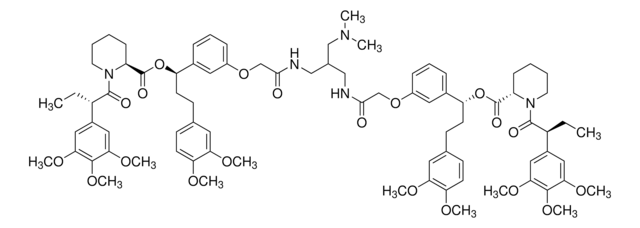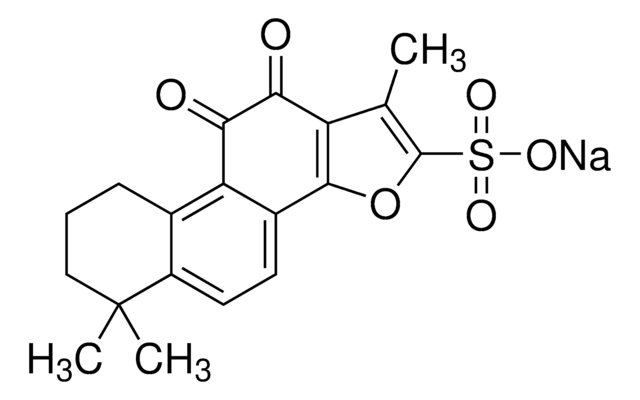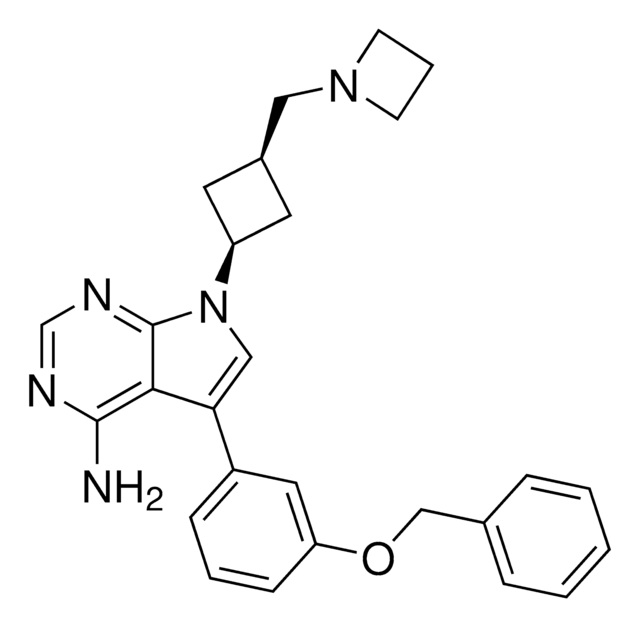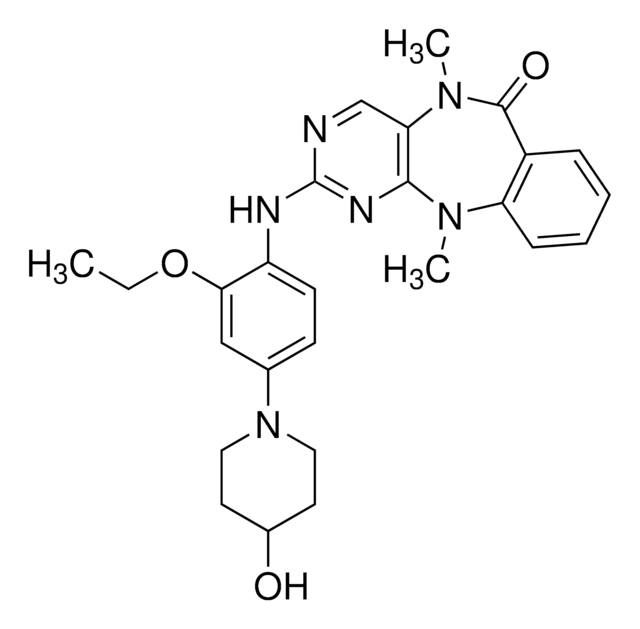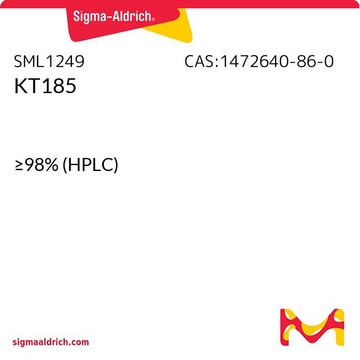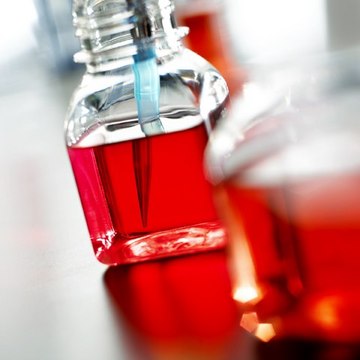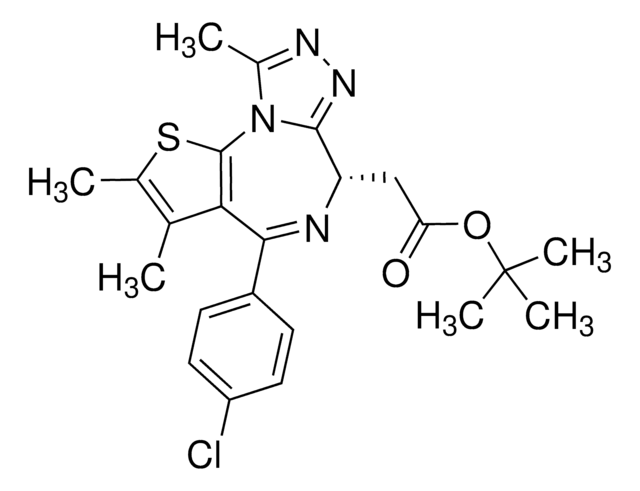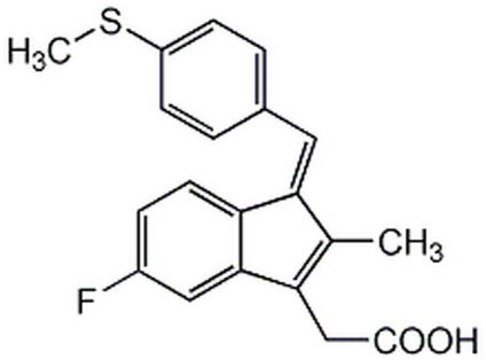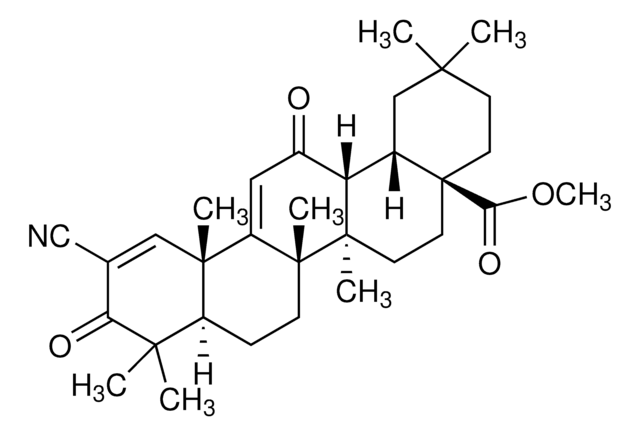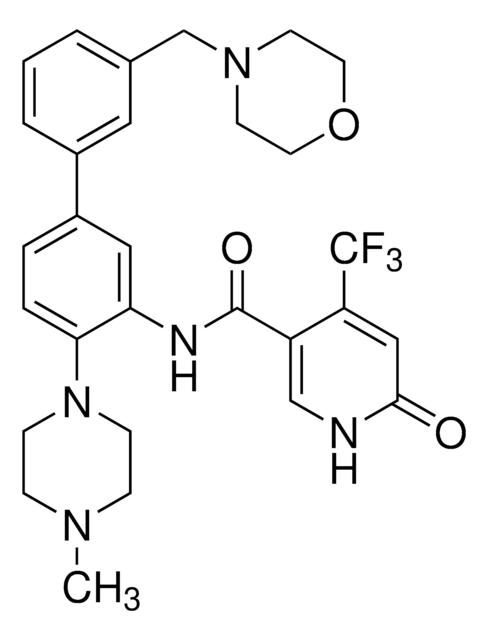推荐产品
质量水平
方案
≥98% (HPLC)
表单
powder (hygroscopic)
储存条件
desiccated
颜色
white to beige
溶解性
H2O: 2 mg/mL, clear
储存温度
−20°C
SMILES字符串
[Cl-].N21CC(C(CC2)CC1)OCC(O)(C4CCCC4)c3ccccc3.[H+]
InChI
1S/C20H29NO2.ClH/c22-20(18-8-4-5-9-18,17-6-2-1-3-7-17)15-23-19-14-21-12-10-16(19)11-13-21;/h1-3,6-7,16,18-19,22H,4-5,8-15H2;1H
InChI key
DDTVVMRZNVIVQM-UHFFFAOYSA-N
生化/生理作用
Penehyclidine hydrochloride is a brain penetrant anticholinergic drug that exhibits both antimuscarinic and antinicotinic activity. Penehyclidine hydrochloride does not induce muscarinic 2 receptor-associated cardiovascular side effects. Penehyclidine hydrochloride is effective in experimental models of heart, lung and brain ischemia reperfusion injury.
储存分类代码
11 - Combustible Solids
WGK
WGK 3
闪点(°F)
Not applicable
闪点(°C)
Not applicable
从最新的版本中选择一种:
分析证书(COA)
Lot/Batch Number
Yaguang Wang et al.
Drug design, development and therapy, 12, 3289-3299 (2018-10-17)
Penehyclidine hydrochloride (PHC) is an anticholinergic drug manufactured in China. It is used widely in clinics as a reversal agent in cases of organic phosphorus poisoning and as a preanesthetic medication. Compared with other anticholinergic agents, PHC confers substantial advantages.
Yaguang Wang et al.
European journal of pharmacology, 839, 1-11 (2018-09-12)
Penehyclidine hydrochloride (PHC) is a new anticholinergic agent that provides protective effects in experimental models of heart and brain ischaemia as well as reperfusion (I/R) injury. In this study, we tested the hypothesis that PHC can alleviate lung ischaemia-reperfusion injury
Yong-An Wang et al.
Life sciences, 78(2), 210-223 (2005-09-13)
Previous studies have paid little attention to the anticonvulsant effect of anticholinergic drugs that act on both muscarinic (M) and nicotinic (N) receptors during soman-induced seizures. Therefore, with the establishment of a soman-induced seizures model in rats, this study evaluated
我们的科学家团队拥有各种研究领域经验,包括生命科学、材料科学、化学合成、色谱、分析及许多其他领域.
联系技术服务部门